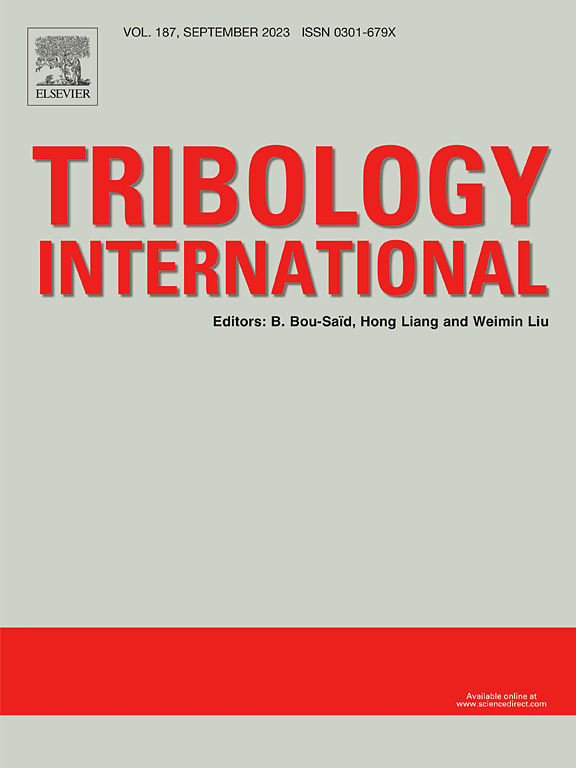Modeling the friction between solid-liquid two-phase flow and multi-asperity surface: Taking magnetic fluid as an example
IF 6.1
1区 工程技术
Q1 ENGINEERING, MECHANICAL
引用次数: 0
Abstract
Reducing the friction drag at the solid-liquid interface has been an objective pursued for centuries. Rheological experiments show that friction drag between magnetic fluid and solid surface decreases and then increases with surface roughness under different magnetic fields. We established a friction model for magnetic fluid two-phase flow with rough surfaces, integrating carrier fluid flow resistance (F1), shear fracture force of field-induced structure (F2), and adhesion friction of field-induced structure (F3). This model quantitatively calculates friction drag, aligning well with experimental results. This paper opens up a new perspective for understanding the friction drag between solid-liquid two-phase flow and solid interface, providing an inspirational theoretical basis for drag reduction of solid-liquid two-phase flow.
求助全文
约1分钟内获得全文
求助全文
来源期刊

Tribology International
工程技术-工程:机械
CiteScore
10.10
自引率
16.10%
发文量
627
审稿时长
35 days
期刊介绍:
Tribology is the science of rubbing surfaces and contributes to every facet of our everyday life, from live cell friction to engine lubrication and seismology. As such tribology is truly multidisciplinary and this extraordinary breadth of scientific interest is reflected in the scope of Tribology International.
Tribology International seeks to publish original research papers of the highest scientific quality to provide an archival resource for scientists from all backgrounds. Written contributions are invited reporting experimental and modelling studies both in established areas of tribology and emerging fields. Scientific topics include the physics or chemistry of tribo-surfaces, bio-tribology, surface engineering and materials, contact mechanics, nano-tribology, lubricants and hydrodynamic lubrication.
 求助内容:
求助内容: 应助结果提醒方式:
应助结果提醒方式:


